Choreographer William Forsythe on melding man, machine and dance
William Forsythe on the concepts and techniques underlying his exhibition at Gagosian Le Bourget in Paris. Courtesy of Gagosian
Newly presented – and programmed – at Gagosian Le Bourget, the pair of robotic arms conducting giant black flags through a 28-minute sequence on constant loop are the main attraction of ‘Choreographic Objects’, Forsythe’s first exhibition with the gallery. Those who are familiar with his impressive body of work conceived for dancers will detect the transfer of gesture and dynamism to these decidedly nonhuman forms. But whereas dance, even when at its most avant-garde is still a familiar construct, the unprecedented nature of this work encourages a steady stream of questions and interpretations.
Over the course of the recent vernissage, one guest compared them to otherworldly sea creatures, while another suggested that the concept itself felt insurgent (this being the opposite of waving a white flag in surrender). At moments, the arching, swooping, arms would appear athletic or balletic only to turn threatening as the flag rippled horizontally, hovering just above the ground. Those who looked away for a few minutes might have missed the movements slowing down gracefully or else thrusting upward in ways no human could perform. Was Forsythe considering Kazimir Malevich’s Black Square as an animated object, or prophesising automated art as a new medium? Ultimately, everyone seemed to arrive at the same conclusion: wow.
The show, which also includes a video of dancers Rauf Yasit (aka RubberLegz) and Riley Watts entangled in their own contortionist Gordian knot, marks Forsythe’s ongoing pursuit of testing alternative ‘writing tools’ for movement. In a sense, his robots might be considered the descendants of Loie Fuller, whose mesmerising Serpentine Dance from 1896 was owing to wooden poles that she swirled from within diaphanous white robes to extend her range of motion. Forsythe enthusiastically acknowledged the parallel – and the competitive edge an industrial robot has over joints and muscles.
‘What you’re watching is something absolutely platonic, because all the geometries in this event are digital – or mechanical via digital. So it’s a digital entity’s idea of horizontality or verticality or circularity or torque,’ he explains in a follow-up conversation. ‘On the other hand, human movement has more complexity because it deviates more.’
Forsythe presented Black Flags for the first time 2014 as a commission by the Staatliche Kunstsammlungen Dresden and that museum hall was considerably more restricted than Gagosian’s vast, curved-ceiling loft transformed by Jean Nouvel in 2012. Here, the industrial nature of both space and subject correspond especially well. But the different dimensions also meant that Forsythe’s programmer, Sven Thöne, spent six months painstakingly redesigning each movement to account for variables in height or air flow.
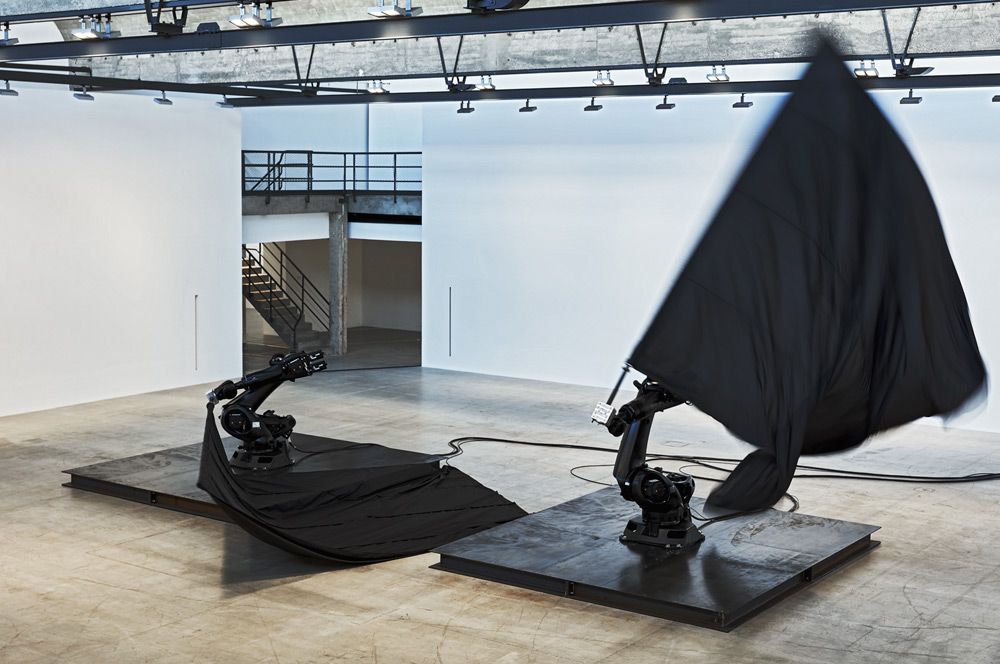
Black Flags, 2014, by William Forsythe, readymade industrial robots, nylon flags, carbon fiber flagpoles, steel plates.
This would quell any temptation to consider the robots, supplied by the manufacturer Kuka, as artificial intelligence applied to art. After all, their full-time job is on a factory floor, which is where they return after they finish moonlighting here. ‘We pluck them from their industrial tasks and then for a few weeks or a few months, we give them a poetic task and then they disappear,’ mused Forsythe.
Cue the empathy impulse. When suggested to Forsythe that he’s liberated them, even if briefly, from their mundane existence by allowing them this form of artistic expression he replied, ‘They’re also capable of that, you know? I’m making an assumption here, but no one thought of them as poetic instruments of writing.’
The fact that Black Flags is being exhibited in a gallery means it might find a forever home with an institution or collector. As an interesting plot twist, Forsythe, who lives in Vermont, pointed out that the buyer actually acquires the choreography. ‘It’s not like I’m suddenly doing visual art; this is choreographic work. It could be seen as sculpture – sure, why not. But that was not the intention. The intention was to find a site for choreographic writing.’
Still, what results from this writing is visually powerful – and perhaps even more so at a time when issues concerning nationalism and the presence of darker political forces remain ever-present. Forsythe, for the most part, eschews this discussion, offering instead that he settled on black because it was ‘aesthetically, relatively neutral.’
Anyone who can visit this performance live will be distinctly aware of the sound, a push and pull between the fabric flapping and the machines whirring, times two. Forsythe singles out a moment when the left flag drags across the floor to produce a snake-like hissing noise as just one surprise in this unintended music score. ‘It’s like a piano duet because, when making pure choreography like that, there’s no narrative involved. I’m trying to actually erase any kind of associative narrative.’ Which circles back to all the interpretative possibilities. One person’s matador muleta is another’s sting ray.
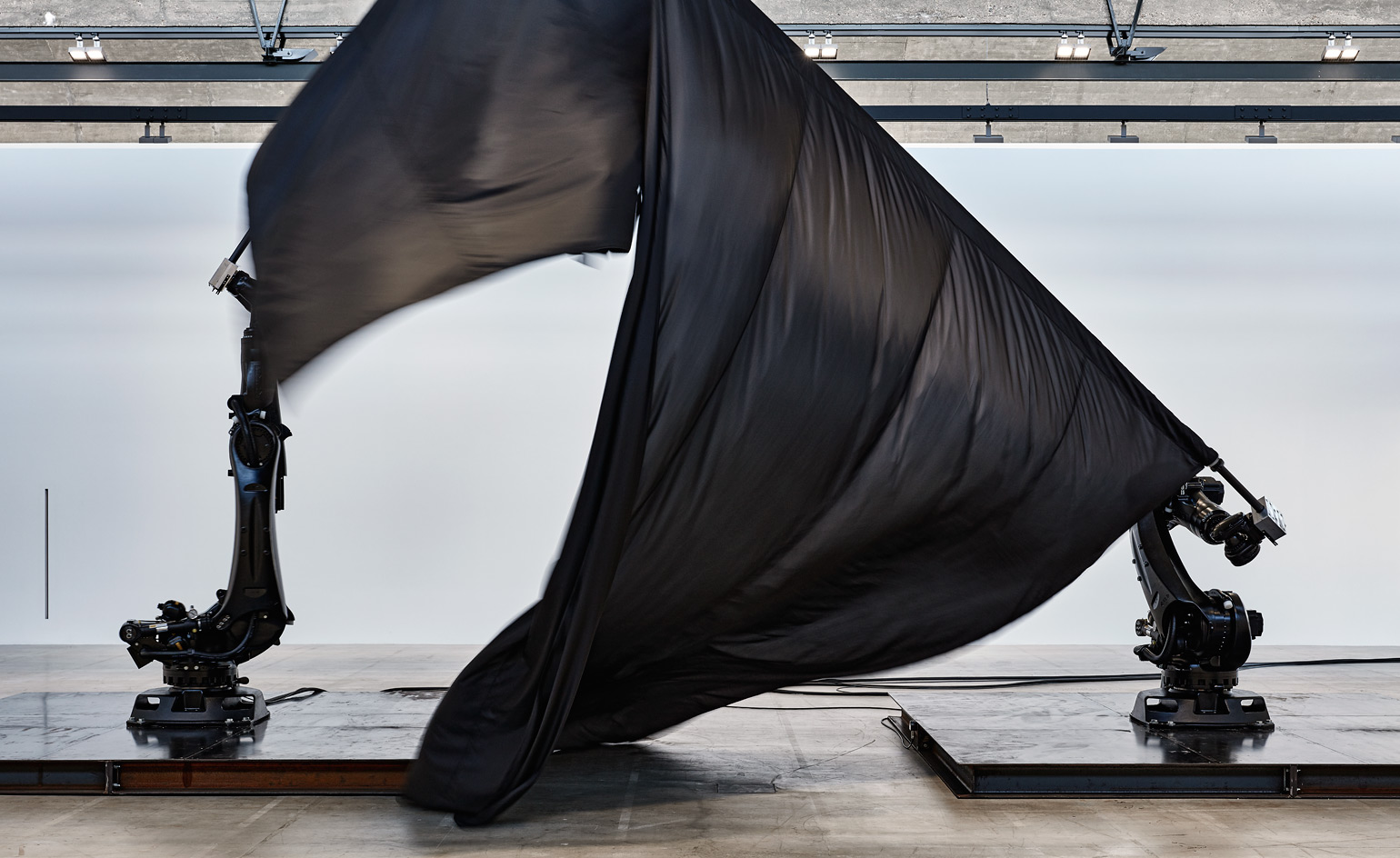
Black Flags, 2014, by William Forsythe, readymade industrial robots, nylon flags, carbon fiber flagpoles, steel plates.
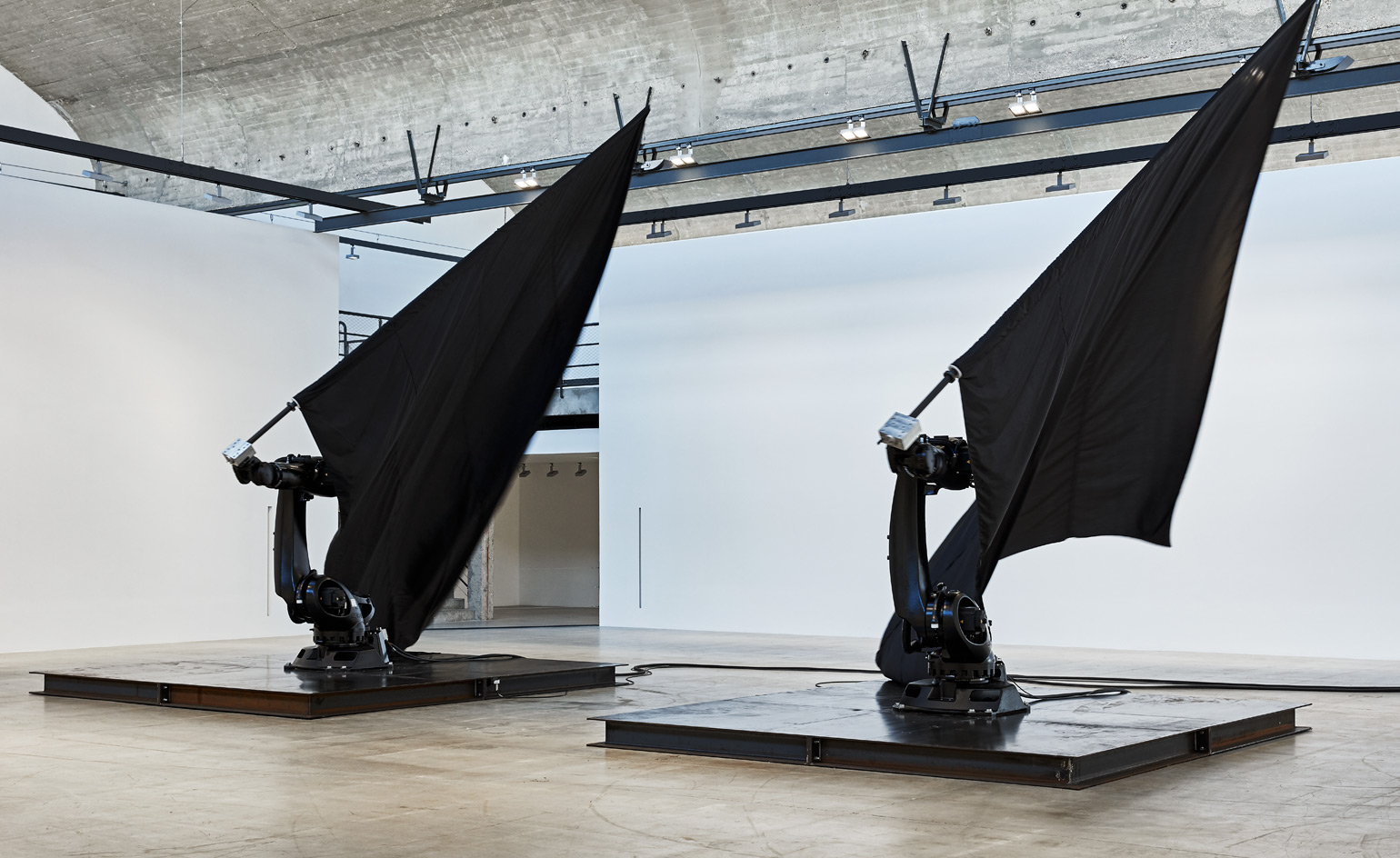
Black Flags, 2014, by William Forsythe, readymade industrial robots, nylon flags, carbon fiber flagpoles, steel plates.
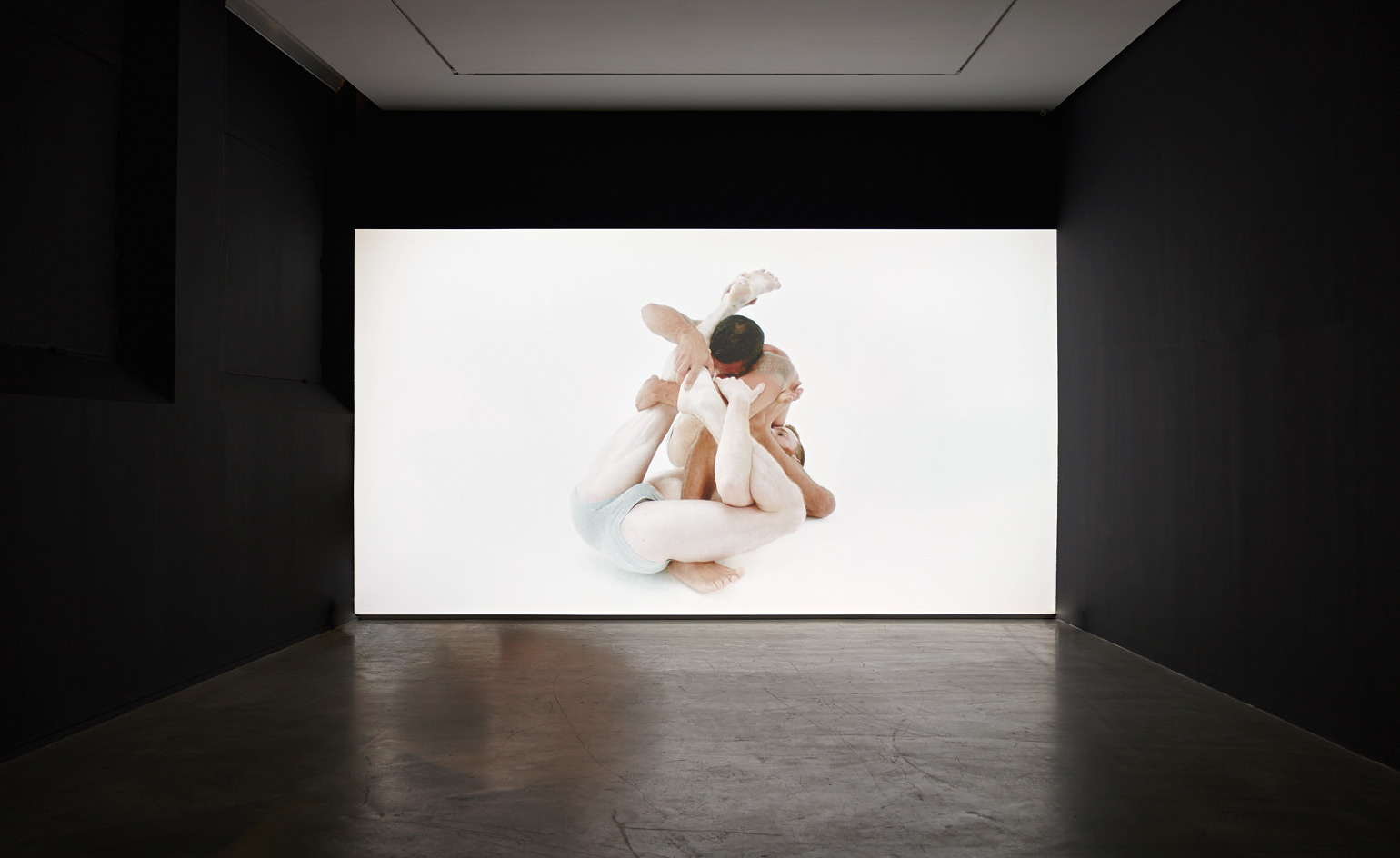
Alignigung 2, 2017, by William Forsythe, single channel video.
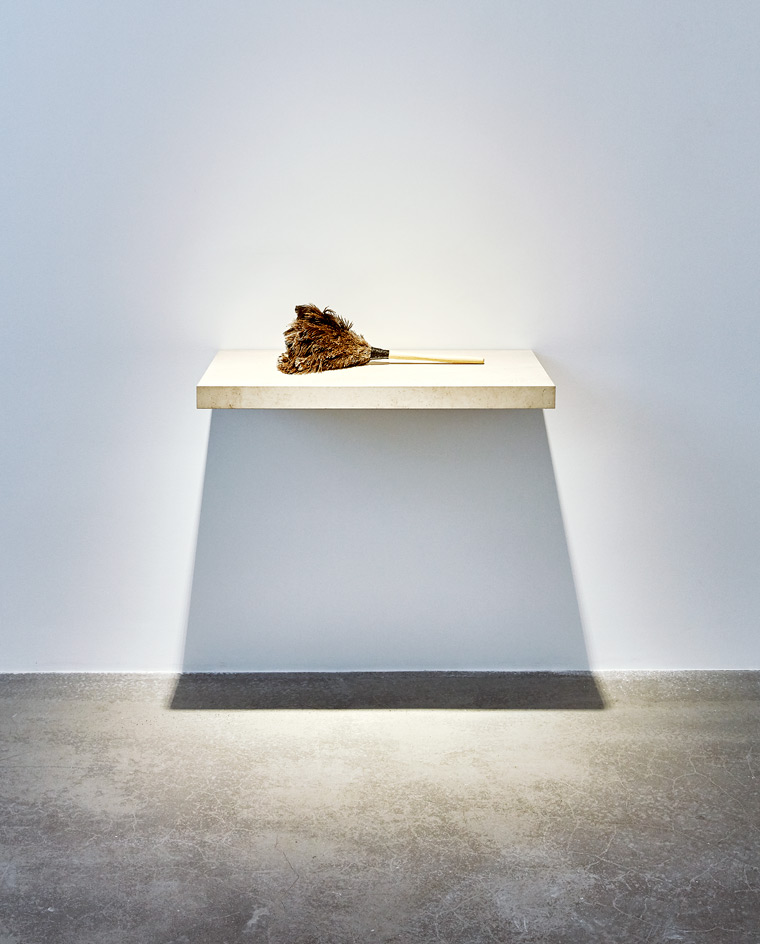
Towards the Diagnostic Gaze (Paris), 2017, by William Forsythe.
INFORMATION
‘William Forsythe: Choreographic Objects’ is on view until 22 December. For more information, visit the Gagosian website
ADDRESS
Gagosian Le Bourget
26 Avenue de l’Europe
93350 Le Bourget
Receive our daily digest of inspiration, escapism and design stories from around the world direct to your inbox.
-
 The Stahl House – an icon of mid-century modernism – is for sale in Los Angeles
The Stahl House – an icon of mid-century modernism – is for sale in Los AngelesAfter 65 years in the hands of the same family, the home, also known as Case Study House #22, has been listed for $25 million
-
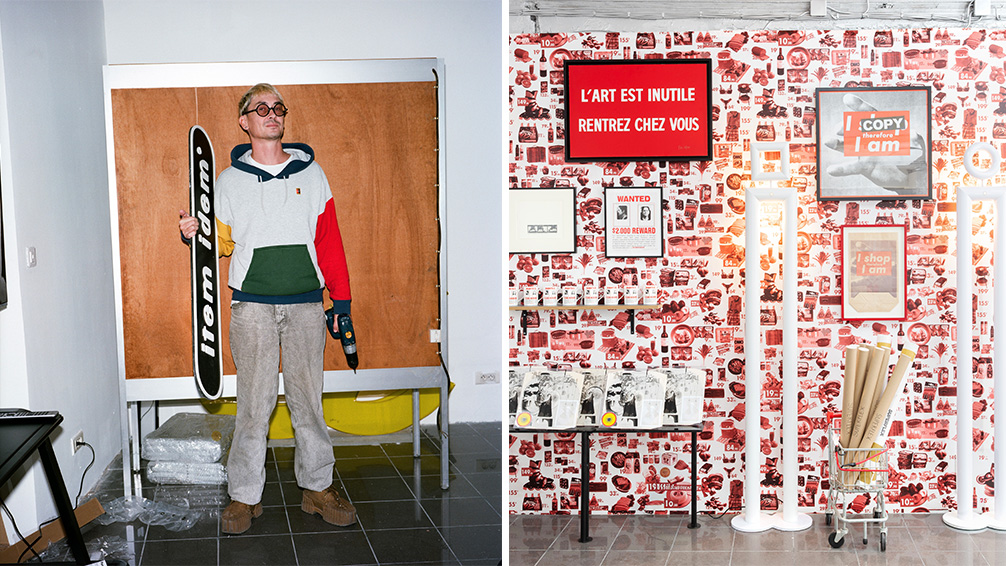 Is this Paris' most design-focused holiday shop?
Is this Paris' most design-focused holiday shop?Shop weird and wonderful design and fashion at this playful, postmodern exhibition from Item Idem, where commerce, culture and humour intersect
-
 Modernist Scotland explores the country’s impressive legacy of contemporary architecture
Modernist Scotland explores the country’s impressive legacy of contemporary architectureA new book, Modernist Scotland, delves into the art and ambitions of the International Style in post-war Scotland, presenting 150 projects that typify an age of optimism and innovation.
-
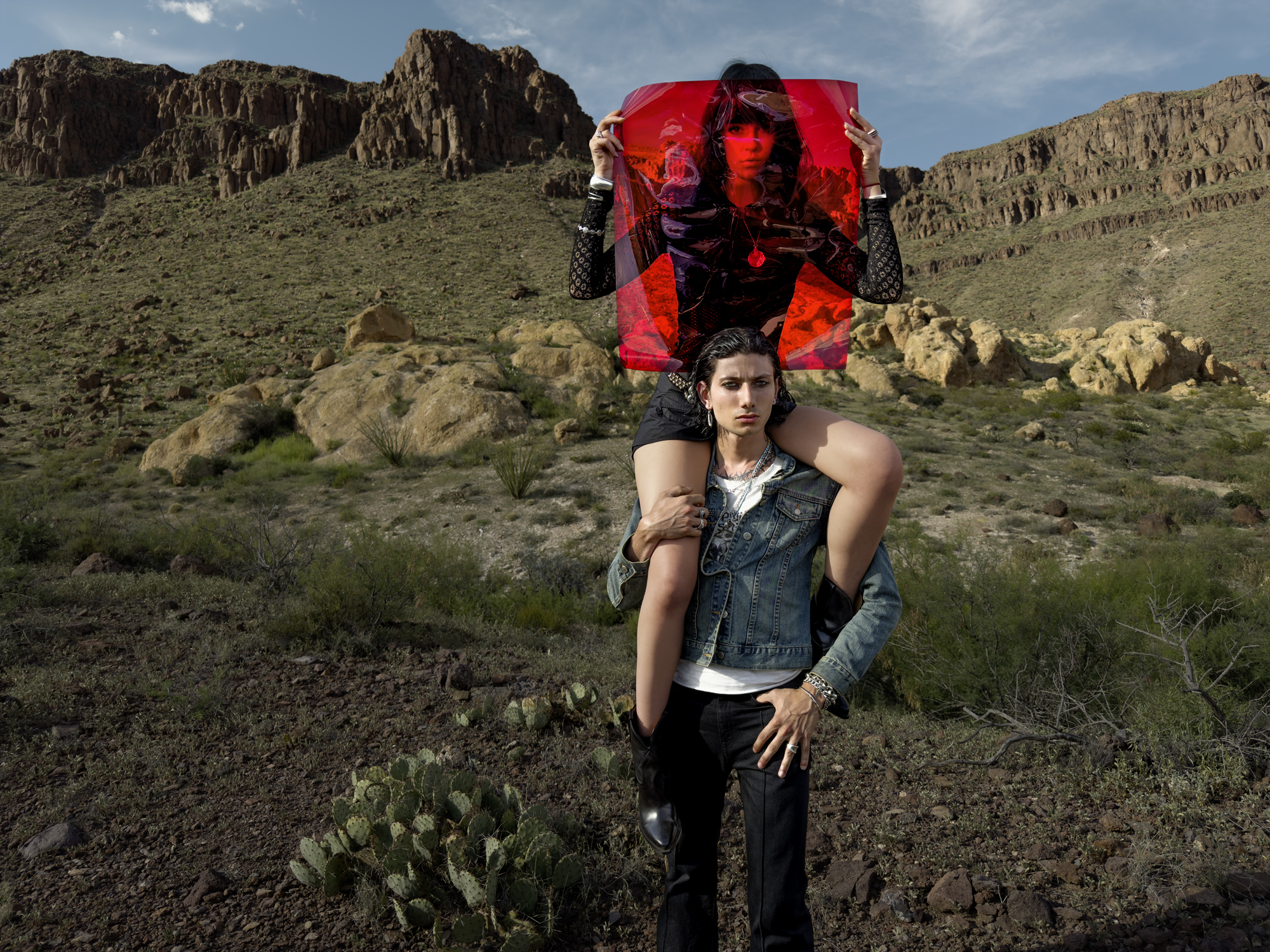 Inez & Vinoodh unveil romantic new photography series in Paris
Inez & Vinoodh unveil romantic new photography series in ParisA series of portraits of couple Charles Matadin and Natalie Brumley, created using an iPhone in Marfa, Texas, goes on show in Paris
-
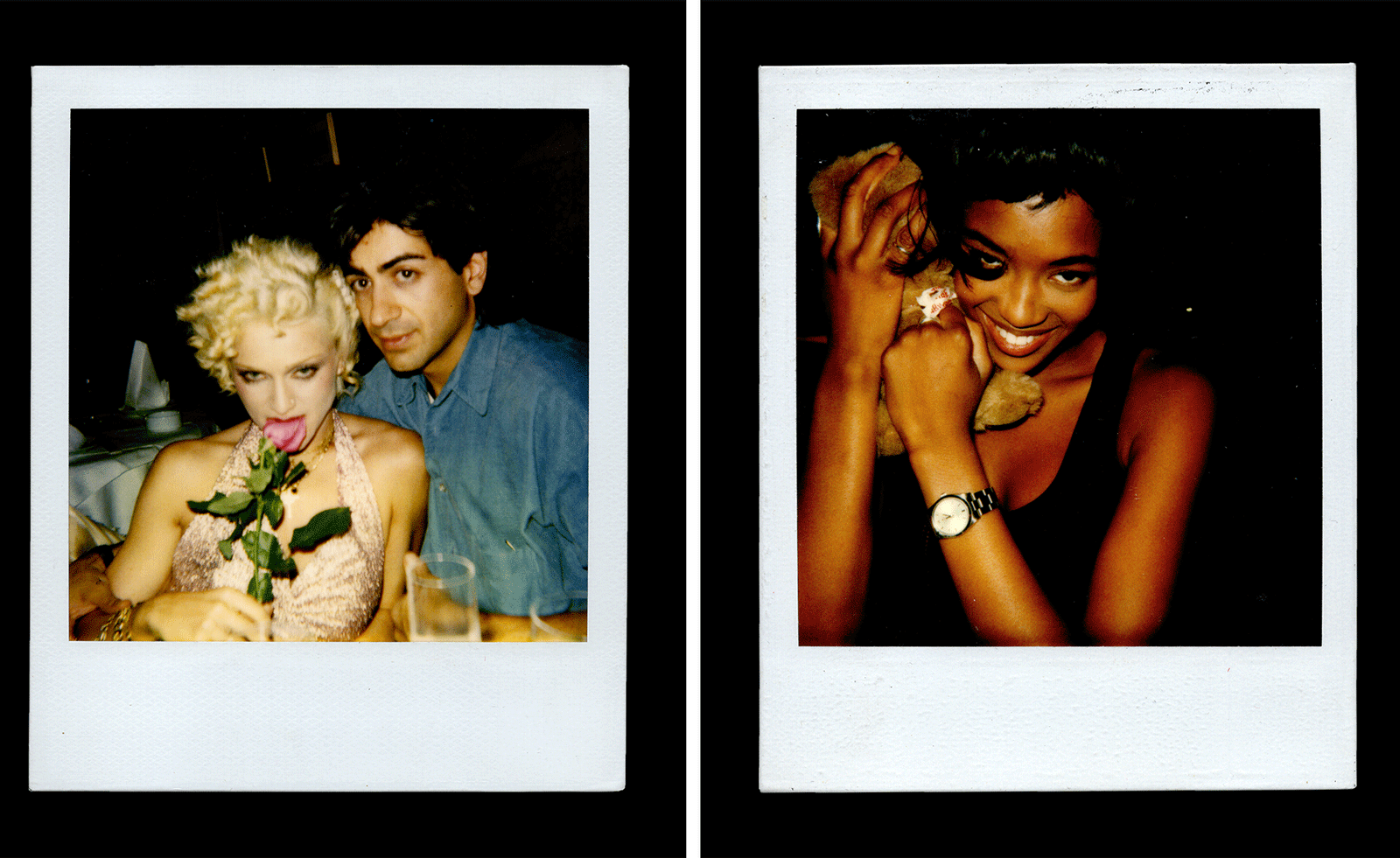 Inside Davé, Polaroids from a little-known Paris hotspot where the A-list played
Inside Davé, Polaroids from a little-known Paris hotspot where the A-list playedChinese restaurant Davé drew in A-list celebrities for three decades. What happened behind closed doors? A new book of Polaroids looks back
-
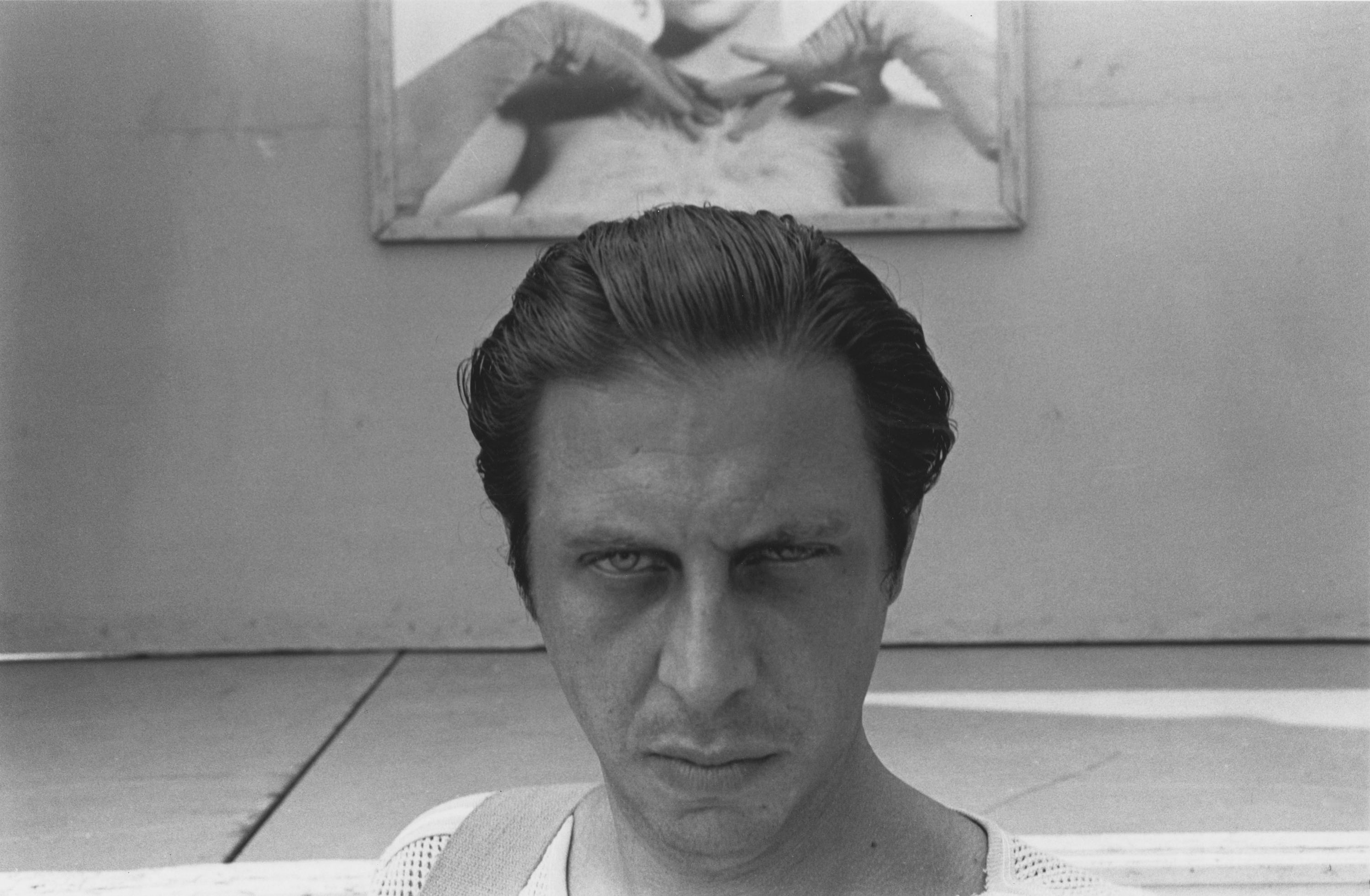 All eyes on Paris Photo 2025 – focus on our highlights
All eyes on Paris Photo 2025 – focus on our highlightsThe world's most important international photography fair brings together iconic and emerging names, galleries large and small – and there’s much to covet
-
 Ten things to see and do at Art Basel Paris 2025
Ten things to see and do at Art Basel Paris 2025Art Basel Paris takes over the city from 24-26 October. Here are the highlights, from Elmgreen & Dragset to Barbara Kruger and Dash Snow
-
 Yulia Mahr digs beneath the skin in her modern update of classic Greek statues in Paris
Yulia Mahr digs beneath the skin in her modern update of classic Greek statues in ParisIn 'The Church of Our Becoming', on view at the Courtyard at Dover Street Market Paris, Yulia Mahr celebrates real human bodies
-
 Jean-Michel Othoniel takes over Avignon for his biggest ever exhibition
Jean-Michel Othoniel takes over Avignon for his biggest ever exhibitionOriginally approached by Avignon to mark their 25th anniversary as the European Capital of Culture, Jean-Michel Othoniel more than rose to the challenge, installing 270 artworks around the city
-
 Joel Quayson’s winning work for Dior Beauty at Arles considers the theme ‘Face-to-Face’ – watch it here
Joel Quayson’s winning work for Dior Beauty at Arles considers the theme ‘Face-to-Face’ – watch it hereQuayson, who has won the 2025 Dior Photography and Visual Arts Award for Young Talents at Arles, imbues his winning work with a raw intimacy
-
 What to see at Rencontres d’Arles 2025, questioning power structures in the state and family
What to see at Rencontres d’Arles 2025, questioning power structures in the state and familySuppressed memories resurface in sharply considered photography at Rencontres d'Arles 2025. Here are some standout photographers to see